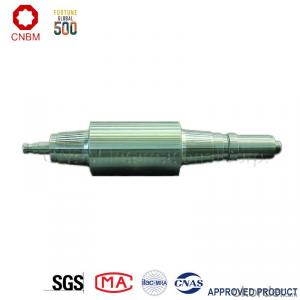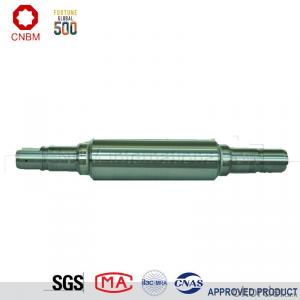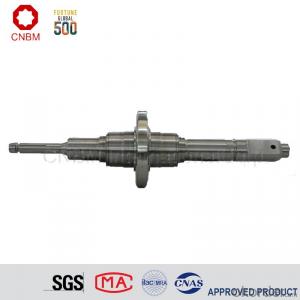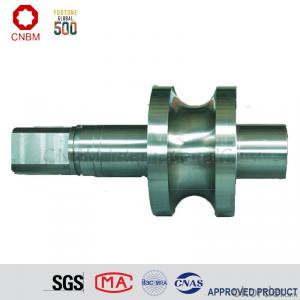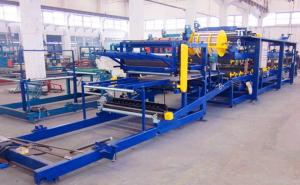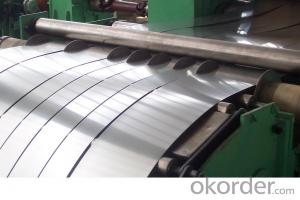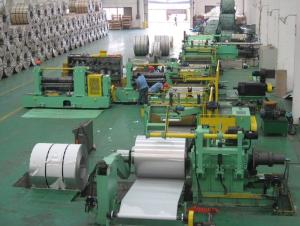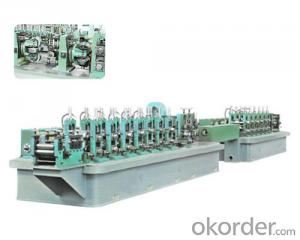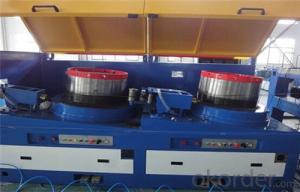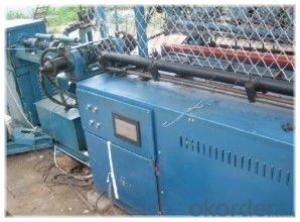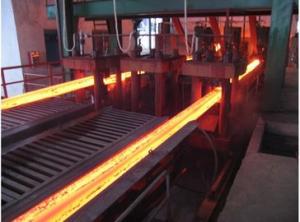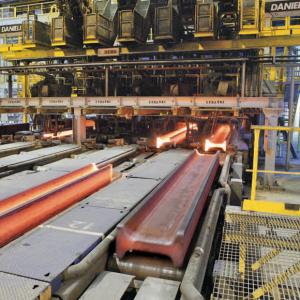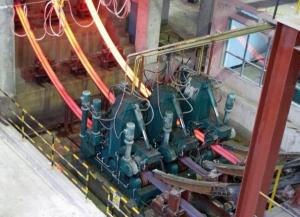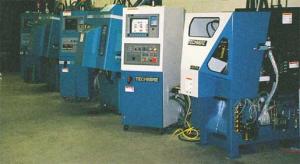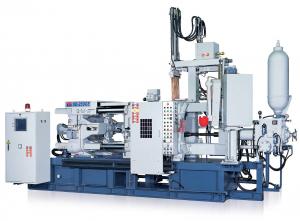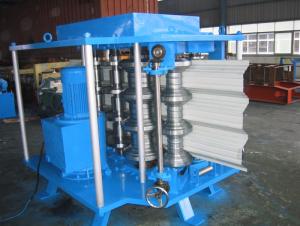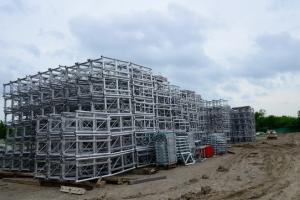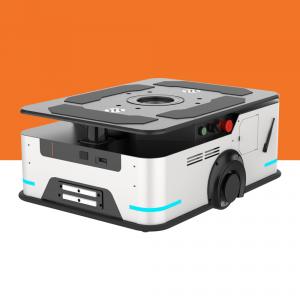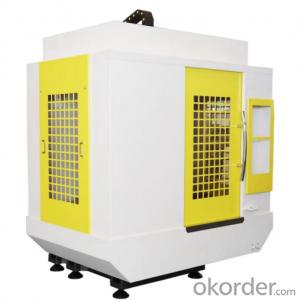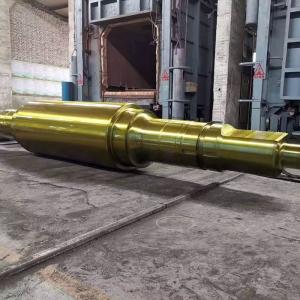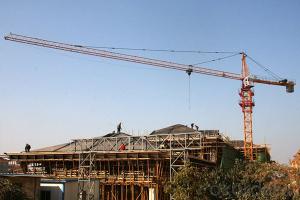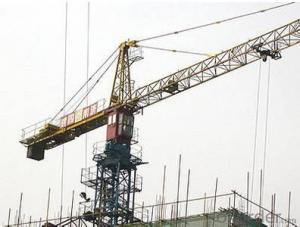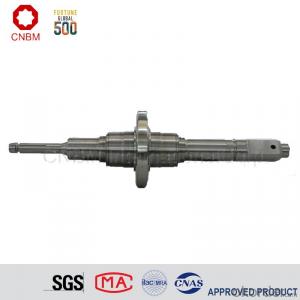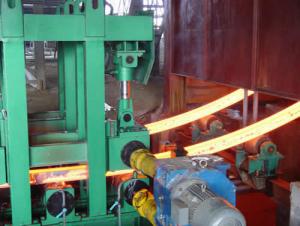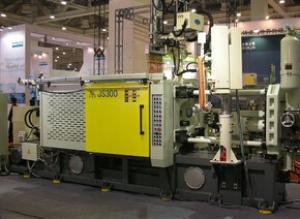Alloy Roll with High Wear Resistance and High Performance
- Loading Port:
- Tianjin
- Payment Terms:
- TT OR LC
- Min Order Qty:
- 2 m.t.
- Supply Capability:
- 41000 m.t./month
- Option:
- 650X1780X5540; 650X1780X5540; 680X2080X5920
OKorder Service Pledge
OKorder Financial Service
You Might Also Like
Item specifice
Company Profile
CNBM International Corporation (CNBM International) is the most important trading platform of CNBM Group Corporation, a state-owned company under the direct supervision of State-owned Assets Supervision and Administration Commission of the State Council.
CNBM Group is integrated with four business segments: Manufacture, R&D,Sets of equipment and Logistics trading.Mill rolls are our main products.
CNBM International is highly recognized by its business partners and clients all over the world and has established good business relationship with the customers in over 120 countries and regions all over the world.

The product introduction of mill roll
Equipped with advanced technological facilities on melting, casting, forging, heat treating and mechanical machining, our factory has formed 9 professional complete roll manufacturing lines of cast steel, cast iron and forged steel rolls such as strip mill rolls, heavy section mill rolls, wire & bar rolls, special shaped rolls and small-sized cold rolls and specialized production lines of bloom and slab CCM, coke oven equipments and wind power products. Annual production capacity of mill rolls is 500,000 tons, metallurgical equipment is 80,000 tons.

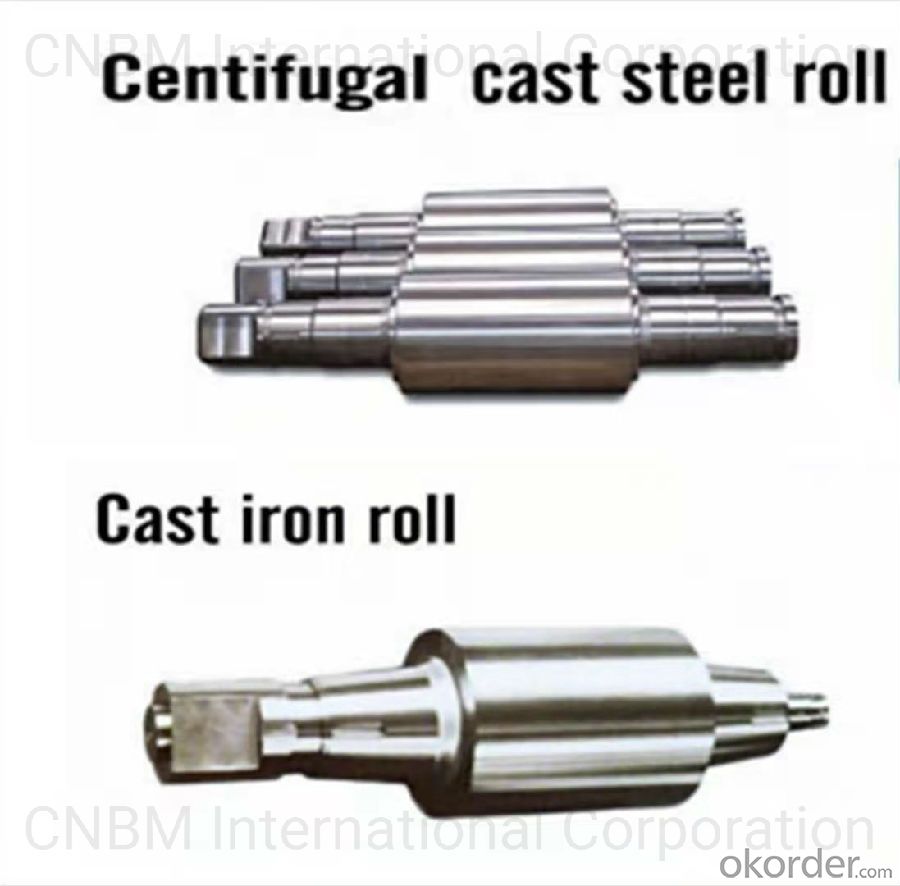
Workshop
Workshop is the core of our company and undertakes all of scientific research work. The company specially produces and supplies all kinds of roll used for hot strip mill, cold strip mill, plate & heavy plate mill, large-sized section mill, universal mill etc.
 Products & Specification
Products & Specification
| Mill | Application | Material | Product Specification | ||
| Hot Strip Mill | Large-sized vertical roll | Special alloy cast roll, Adamite | All Sizes | ||
| Small-sized vertical roll | Adamite, HiCr iron | ||||
| Roughing work roll | Special alloy cast steel, Adamite, HiCr steel, Semi-HSS, HiCr iron | ||||
| Finish rolling | Early stand work roll | HiCr iron, HSS | |||
| Later stand work roll | ICDP, HSS | ||||
| Finishing back-up roll | Duplex cast steel | D≤¢2000,W≤80t | |||
| Alloy forged steel | D≤¢2000,W≤75t | ||||
| Temper rolling | Work roll | HiCr iron | All Sizes | ||
| Alloy forged steel | |||||
| Back-up roll | ICDP | ||||
| Duplex cast steel | D≤¢2000, W≤80t | ||||
| Alloy forged steel | D≤¢2000, W≤75t | ||||
| Mill | Application | Material | Product specification |
Cold strip mill & Single stand cold mill | Work roll | Alloy forged steel | All Sizes |
| Intermediate roll | Alloy forged steel | ||
| Temper roll | Alloy forged steel | ||
| Back-up roll | Duplex cast steel | D≤¢2000,W≤80t | |
| Alloy forged steel | D≤¢2000,W≤75t | ||
Largesized universal structural mill | Break-down roll | Special alloy cast steel, alloy nodular iron | All Sizes |
| Horizontal collar | High carbon adamite (duplex) | ||
| Vertical collar | High carbon adamite, HiCr iron | ||
| Edger roll Edger roll | High carbon adamite | ||
| Shaft | Alloy forged steel |
| Mill | Application | Marterial | Product Specification | |
| CSP | Vertical Roll | Adamite, Special alloy cast steel, HiCr iron | All Sizes | |
| Roughing work roll | Semi-HSS, HiCr Steel | |||
| Finish rolling | Early stand | HiCr iron, HSS | ||
| Later stand | ICDP, HSS | |||
| Roughing & Finishing back-up roll | Duplex cast steel | D≤¢2000,W≤80t | ||
| Alloy forged steel | D≤¢2000,W≤75t | |||
| Steckel Mill | Vertical roll | Adamite, Special alloy cast steel | All Sizes | |
| Roughing work roll | ICDP, HiCr iron | |||
| Finishing work roll | HiCr iron, ICDP | |||
| Back-up roll | Duplex cast steel | D≤¢2000,W≤80t | ||
| Alloy forged steel | D≤¢2000,W≤75t | |||
| Plate & Heavy plate mill | Rough rolling | 2-hi work roll | Special alloy cast steel, Tool steel | All Sizes |
| 4-hi work roll | HiCr iron, ICDP | |||
| Finishing work roll | HiCr iron, ICDP | |||
| Single stand work roll | HiCr iron, ICDP | |||
| Back-up roll | Duplex cast steel | D≤¢2000,W≤80t | ||
| Alloy forged steel | D≤¢2000,W≤75t | |||
Quality Control
The company has the most advanced experimental and testing equipments in global mill roll industry, including direct-reading spectrometer, spectrum analyzer , X-ray fluorescence analyzer, scanning electronic microscope, energy disperse spectroscopy, X-ray diffractometer, image analyzer, high/low temperature metallographic microscope, X-ray stress meter, brittleness temperature tester, thermal analogue machine, dilatometer, macro and micro hardness tester, OMNISCAM-1X automatic flaw detection, USN60 ultrasonic flaw detector, magnetic powder and non-destructive flaw detection etc,. The advanced inspection equipments and experimental methods provide guarantee for quality control and experiment on material, usability test and performance.
Professionals & Comprehensive Inspection
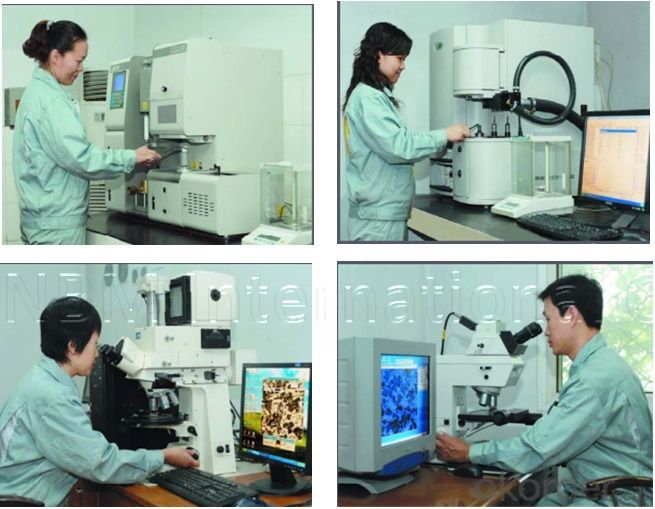
The factories of CNBM invested 2.3 billion RMB for large-scale
CNBM international Corporation has completed equipment and technology upgrade transformation, which was concentrated on three projects, production line of centrifugal casting rolls for hot strip and plate mill, forged roll for cold/hot strip mill, national class technology center and roll material lab. Through upgrade transformation, the following targets have been achideved:
(1)It becomes the world's biggest specialized mill roll maker with the largest production scale, the most complete specifications of products and the most extensive coverage of various rolls used on rolling mill.
(2) The technology of equipments has reached international leading level.
(3) "Mechanization, automation, intellectualization, digitization" of equipments obviously improve the quality control ability.
(4) New types of research instruments improve the R&D capacity of products.
Customers Visit
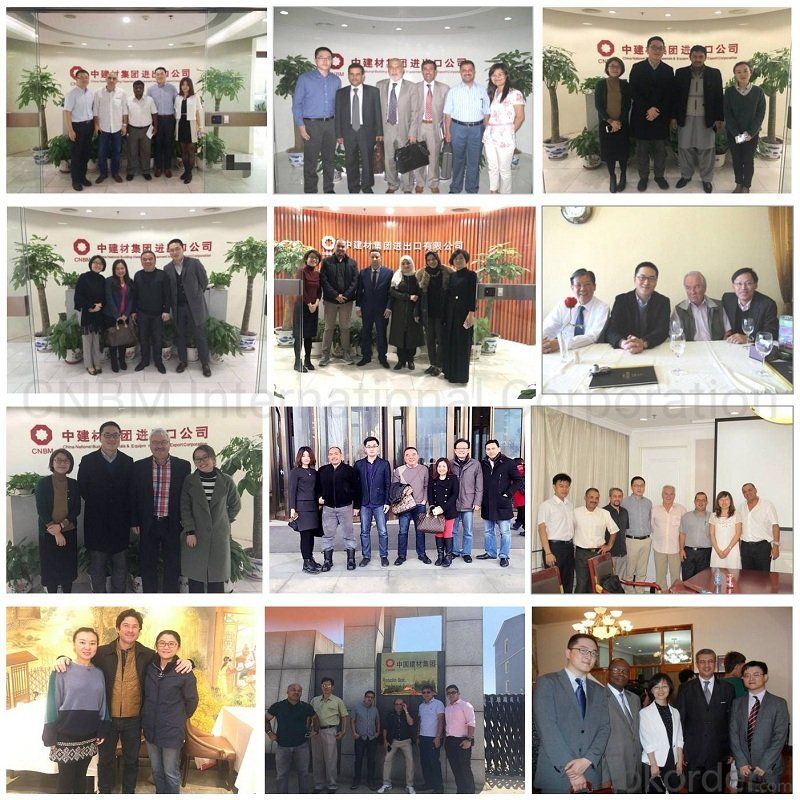
FAQ
Q:Are you a trading company or manufacturer?
A:CNBM is a large-scale central governmental industrial group with its own manufacturing sector, research and development sector, trading sector and logistics sector.
Q:I have some special requirement about specifications.
A:We have a well-rounded product range, which endows us with the capability of applying many special specifications. Please feel free to contact us with yours.
Q:Do you accept OEM service?
A:Yes, we do.
Q:What is your delivery time?
A:It depends on the size/complexity of your order and our own production schedule. Usually we provide a faster delivery than the industry's average.
Q:What is the payment term?
A:Our payment terms are negotiable.
Q:Can I have my own logo on the product?
A:Sure, we can apply your own logo on the products according to your requirement.
- Q:Can metal casting machinery produce castings with different cross-sectional shapes?
- Yes, metal casting machinery can produce castings with different cross-sectional shapes. The process of metal casting involves pouring molten metal into a mold, which is typically made of sand or other materials. The mold is designed to have the desired shape and dimensions of the final casting. Metal casting machinery includes various equipment such as furnaces, ladles, crucibles, and casting molds. These tools and machines allow for the creation of complex shapes and intricate details in the castings. By using different types of molds, patterns, and cores, metal casting machinery can produce castings with a wide range of cross-sectional shapes. For example, metal casting machinery can create castings with cylindrical, square, rectangular, or even custom-shaped cross-sections. The molds used in the process can be single-piece or multi-piece, allowing for the production of castings with more complex shapes and internal cavities. Additionally, metal casting machinery can also produce castings with varying wall thicknesses. This is achieved by using different techniques such as sand cores or shell cores, which can be placed in the mold to create internal cavities or hollow sections in the casting. Overall, metal casting machinery offers a versatile and flexible manufacturing process that can produce castings with different cross-sectional shapes to meet specific design requirements.
- Q:How do you calculate the return on investment for metal casting machinery?
- To calculate the return on investment (ROI) for metal casting machinery, you need to consider the initial investment cost and the potential financial benefits it will generate over a specific period. 1. Initial Investment Cost: Begin by determining the total cost of acquiring and installing the metal casting machinery. This includes the purchase price, delivery and installation fees, any necessary modifications or upgrades, and training expenses. 2. Financial Benefits: Next, estimate the financial benefits that the machinery will generate. These can include increased production capacity, improved product quality, reduced labor costs, and energy efficiency gains. Quantify these benefits in terms of monetary value, either as cost savings or additional revenue. 3. Timeframe: Decide on a specific timeframe over which you want to calculate the ROI. It could be a year, several years, or the expected lifespan of the machinery. The timeframe will depend on the industry norms and your specific business goals. 4. Calculation: To calculate the ROI, use the following formula: ROI = (Net Profit / Initial Investment Cost) x 100 Net Profit = Total financial benefits - Initial Investment Cost Divide the net profit by the initial investment cost and multiply by 100 to get the ROI percentage. 5. Assessment: Once you have calculated the ROI, assess whether it meets your investment criteria. A higher ROI indicates a better return on the investment. Consider factors such as payback period, cash flow, and the overall financial health of your business when evaluating the ROI. It's important to note that ROI calculations should also consider potential risks, maintenance costs, and depreciation of the machinery over time. Additionally, it's advisable to consult with financial professionals or use specialized software to ensure accurate calculations and a more comprehensive analysis of the investment.
- Q:What are the common testing methods used to ensure the quality of castings produced by metal casting machinery?
- There are several common testing methods used to ensure the quality of castings produced by metal casting machinery. These methods are crucial in identifying any potential defects or issues that may affect the integrity and performance of the castings. 1. Visual Inspection: This is the most basic method where the castings are visually examined for any surface defects such as cracks, porosity, or surface finish. Skilled inspectors use their expertise to ensure that the castings meet the required standards. 2. Dimensional Inspection: This method involves measuring the dimensions and tolerances of the castings using various tools such as calipers, micrometers, or coordinate measuring machines (CMMs). It ensures that the castings are within the specified dimensions, ensuring proper fit and assembly. 3. Non-Destructive Testing (NDT): NDT techniques are used to assess the internal quality of castings without causing any damage. Common NDT methods include: - X-ray Inspection: X-rays are used to create images of the internal structure of the castings, revealing any defects like porosity, inclusions, or voids. - Ultrasonic Testing: High-frequency sound waves are used to detect internal defects by analyzing the reflections and echoes produced. This method can identify issues like cracks, voids, or inclusions. - Magnetic Particle Inspection: This method involves magnetizing the castings and applying magnetic particles. Any surface or near-surface defects such as cracks or discontinuities will cause the particles to gather, making the defects visible. 4. Destructive Testing: In some cases, castings are subjected to destructive testing to assess their mechanical properties. This may include: - Tensile Testing: A sample of the casting is subjected to tension to determine its strength, ductility, and other mechanical properties. - Hardness Testing: This method measures the hardness of the casting, which is an important factor in determining its resistance to wear, friction, and deformation. - Metallographic Examination: Cross-sections of the castings are examined under a microscope to analyze the microstructure, grain size, and any potential defects like inclusions or segregation. By employing these testing methods, manufacturers can ensure that the castings produced by metal casting machinery meet the required quality standards and are fit for their intended application.
- Q:What are the different types of sand mixtures used in metal casting machinery?
- Metal casting machinery utilizes various types of sand mixtures, each possessing its own unique attributes and applications. 1. The most widespread and frequently employed sand mixture in metal casting is known as Green Sand. It incorporates silica sand, clay, water, and additives. Moldable and possessing solid strength, Green Sand can be reused multiple times. It is versatile, suitable for casting a diverse array of metals and alloys. 2. Dry Sand, as its name suggests, lacks water in its composition. It is created by blending silica sand, clay, and other additives. Dry Sand is often utilized for larger castings with intricate shapes and details. Prior to casting, a pattern is necessary as it does not retain its shape well independently. 3. Loam Sand is a combination of sand, clay, and organic materials like straw or horse manure. It is employed in crafting large molds or cores for casting heavy and bulky objects. Loam Sand offers robust strength and stability, rendering it suitable for casting sizable engine blocks and similar components. 4. Facing Sand is specifically utilized for the mold or core's surface layer. Typically composed of high-quality silica sand with fine grains, it helps achieve a smooth and pristine casting surface, minimizing the need for additional finishing procedures. 5. Backing Sand is employed to fill the space behind the Facing Sand, providing support to the mold or core. Generally made from coarser sand with increased clay content, Backing Sand enhances the strength and stability of the mold or core during the casting process. 6. Chromite Sand is a specialized sand mixture containing chromium ore. It is employed in specific metal casting applications that require exceptional heat resistance and dimensional stability. Foundries casting stainless steel, high-alloy steel, and superalloys commonly utilize Chromite Sand. Ultimately, the selection of a sand mixture depends on factors such as the metal type, casting complexity, and desired surface finish. Different sand mixtures offer distinct properties and advantages, enabling metal casting machinery to generate a broad range of high-quality castings.
- Q:What are the maintenance and repair costs associated with metal casting machinery?
- The maintenance and repair costs associated with metal casting machinery can vary depending on several factors, including the type of machinery, its age, usage frequency, and the overall condition of the equipment. Regular maintenance of metal casting machinery is crucial to ensure its optimal performance and longevity. Maintenance tasks typically include cleaning, lubricating moving parts, inspecting and replacing worn-out components, and performing routine checks to identify any potential issues. These maintenance tasks help prevent breakdowns, extend the lifespan of the machinery, and reduce the risk of costly repairs. The costs associated with maintenance can vary depending on the complexity of the machinery and the expertise required to perform the tasks. Simple maintenance tasks such as cleaning and lubricating can often be done by the operators themselves, requiring minimal expenses. However, more complex maintenance tasks may require the assistance of specialized technicians or engineers, which can increase the overall maintenance costs. In addition to regular maintenance, metal casting machinery may require repairs from time to time. Repair costs can vary greatly depending on the nature and severity of the issue. Minor repairs such as replacing a faulty sensor or a worn-out belt may only incur moderate expenses. However, major repairs, such as replacing a malfunctioning furnace or a damaged casting mold, can be significantly more expensive. Furthermore, the availability and cost of spare parts can also impact the maintenance and repair costs. If the machinery is older or from a less common brand, finding suitable spare parts may be more challenging and costly. To minimize maintenance and repair costs, it is crucial to follow a comprehensive preventive maintenance schedule, conduct regular inspections, and address any issues promptly. Investing in high-quality machinery and using it within its operational limits can also help reduce the frequency and severity of repairs. Additionally, training operators on proper equipment usage and maintenance procedures can contribute to prolonging the machinery's lifespan and reducing overall costs.
- Q:What is the size range of metal casting machinery?
- The size range of metal casting machinery can vary significantly depending on the specific application and requirements. Metal casting machinery is available in a wide range of sizes, from small, bench-top models used for jewelry making or small-scale production, to large, industrial-scale machines used for casting large components or parts. On the smaller end of the size range, metal casting machinery may have a footprint similar to that of a desktop printer, with dimensions ranging from a few inches to a couple of feet. These machines are typically used for precise and intricate casting processes, such as investment casting or lost-wax casting, where small and detailed parts are produced. In contrast, larger metal casting machinery used for industrial purposes can be significantly larger and more complex. These machines can have dimensions ranging from several feet to even tens of feet in length, width, and height. They are designed to handle the casting of larger and heavier components, such as engine blocks, turbine blades, or structural parts for buildings or bridges. It is important to note that the size range of metal casting machinery is not solely determined by the physical dimensions of the machine itself but also by other factors such as the weight and volume of the castings it can produce, the capacity of the furnace or melting process, and the overall capabilities and specifications of the machine. In summary, the size range of metal casting machinery can vary greatly, ranging from small desktop models to large industrial-scale machines, with the specific size depending on the intended application and requirements.
- Q:How does metal casting machinery handle the extraction of castings from the molds?
- Metal casting machinery typically uses a combination of mechanical and hydraulic systems to handle the extraction of castings from the molds. These machines are designed with specialized features such as ejector pins, knockout rods, and hydraulic cylinders that apply force to release the castings from the molds. Additionally, the machines may also incorporate vibration or tapping mechanisms to help loosen the castings. Overall, the machinery ensures efficient and accurate extraction of castings while minimizing the risk of damage or deformation.
- Q:How are defects in metal castings detected and corrected?
- Various methods can be used to detect and correct defects in metal castings, ensuring the final product's quality and integrity. Visual inspection is a primary way to identify defects, where experienced inspectors thoroughly examine the castings for visible imperfections like cracks, porosity, or surface irregularities. This process involves using proper lighting, magnification tools, and sometimes dye penetrants or fluorescent agents to enhance defect visibility. Non-destructive testing (NDT) techniques are commonly employed alongside visual inspection to detect hidden defects that may not be visible to the naked eye. NDT methods, such as X-ray radiography, ultrasonic testing, magnetic particle inspection, and liquid penetrant testing, evaluate the internal structure of castings and identify flaws that could compromise their mechanical properties. These techniques rely on detecting changes in material density, sound waves, magnetic fields, or liquid penetration into surface cracks, ensuring accurate defect detection. After identifying defects, corrective measures are implemented based on the nature and extent of the defect. For minor defects like surface irregularities and small porosity, techniques like grinding, sanding, or polishing are used to remove or reduce imperfections. Surface treatment methods, such as shot blasting or chemical cleaning, may follow to further refine the casting's appearance and texture. In cases of severe defects like cracks or significant porosity, more substantial corrective actions are necessary. This may involve welding or soldering to repair cracks or, in extreme cases, cutting out and replacing the defective portion of the casting. These measures aim to restore the casting's structural integrity and functional properties, ensuring it meets required specifications. Prevention is the best approach to minimize defects in metal castings. Employing quality control measures throughout the entire casting process, from raw material selection to mold design and casting parameters, reduces the occurrence of defects. Close monitoring of the casting process and strict quality assurance protocols allow manufacturers to identify and address potential issues before they result in defects. Regular maintenance of casting equipment and molds, along with continuous personnel training, also contribute to defect prevention and overall product quality improvement.
- Q:What is the role of robotics in metal casting machinery?
- The role of robotics in metal casting machinery is significant and has revolutionized the efficiency and precision of the casting process. Robotics are used in various aspects of metal casting machinery, including mold making, pouring, and finishing operations. In mold making, robots are employed to create the molds required for casting. These robots are equipped with advanced software and tools to accurately and quickly shape the molds, reducing the time and effort required compared to traditional manual methods. This automation ensures consistent mold quality and reduces human error. During the pouring phase, robots take over the task of handling and pouring molten metal into the molds. This eliminates the need for human workers to be exposed to the high temperatures and potential hazards associated with molten metal, ensuring a safer working environment. Additionally, robots can precisely control the pouring process, resulting in consistent casting quality and minimizing defects. Robotic systems also play a crucial role in the finishing operations of metal casting. They can be programmed to perform tasks such as removing excess material, sandblasting, grinding, and polishing. By automating these labor-intensive and repetitive tasks, robots increase efficiency, speed, and accuracy, ultimately reducing costs and improving the overall quality of the finished product. Furthermore, robotics in metal casting machinery enable enhanced flexibility and adaptability. Robots can be programmed to handle different types and sizes of molds, accommodating various casting requirements without the need for extensive retooling or manual adjustments. This versatility allows for increased production capabilities and the ability to respond quickly to changing customer demands. Overall, the integration of robotics in metal casting machinery has transformed the industry by improving productivity, consistency, and safety. These advanced technologies enable manufacturers to produce high-quality castings at a faster pace, with greater precision, and with reduced costs, ultimately leading to increased competitiveness in the global market.
- Q:What are the different types of regulations and standards governing the use of metal casting machinery?
- There are several different types of regulations and standards governing the use of metal casting machinery. These regulations and standards aim to ensure the safety of workers and the overall quality of metal casting processes. One type of regulation that governs the use of metal casting machinery is occupational safety and health regulations. These regulations, established by government authorities, outline the necessary safety measures and procedures that must be followed in metal casting facilities. They may include guidelines on the proper use of personal protective equipment, the maintenance of machinery, and the safe handling of hazardous materials. In addition to occupational safety and health regulations, there are also industry-specific standards that govern the use of metal casting machinery. These standards are often developed by professional organizations or trade associations to promote best practices in the industry. They cover various aspects of metal casting, such as equipment design, process control, and quality assurance. Compliance with these standards ensures that metal casting operations meet certain quality and performance criteria. Furthermore, environmental regulations play a crucial role in governing the use of metal casting machinery. These regulations focus on minimizing the impact of metal casting processes on the environment, including air, water, and soil pollution. Compliance with environmental regulations involves the proper management and disposal of waste materials, the use of environmentally friendly technologies, and the implementation of pollution control measures. Finally, there may be international standards that govern the use of metal casting machinery. These standards are developed by international organizations and are recognized and adopted by different countries. They promote global harmonization and facilitate trade by ensuring that metal casting machinery manufactured in one country meets the requirements of other countries. Overall, the different types of regulations and standards governing the use of metal casting machinery are essential for ensuring the safety of workers, the quality of metal casting processes, and the protection of the environment. Compliance with these regulations and standards is crucial for metal casting facilities to operate efficiently and responsibly.
1. Manufacturer Overview |
|
|---|---|
| Location | |
| Year Established | |
| Annual Output Value | |
| Main Markets | |
| Company Certifications | |
2. Manufacturer Certificates |
|
|---|---|
| a) Certification Name | |
| Range | |
| Reference | |
| Validity Period | |
3. Manufacturer Capability |
|
|---|---|
| a)Trade Capacity | |
| Nearest Port | |
| Export Percentage | |
| No.of Employees in Trade Department | |
| Language Spoken: | |
| b)Factory Information | |
| Factory Size: | |
| No. of Production Lines | |
| Contract Manufacturing | |
| Product Price Range | |
Send your message to us
Alloy Roll with High Wear Resistance and High Performance
- Loading Port:
- Tianjin
- Payment Terms:
- TT OR LC
- Min Order Qty:
- 2 m.t.
- Supply Capability:
- 41000 m.t./month
- Option:
- 650X1780X5540; 650X1780X5540; 680X2080X5920
OKorder Service Pledge
OKorder Financial Service
Similar products
New products
Hot products
